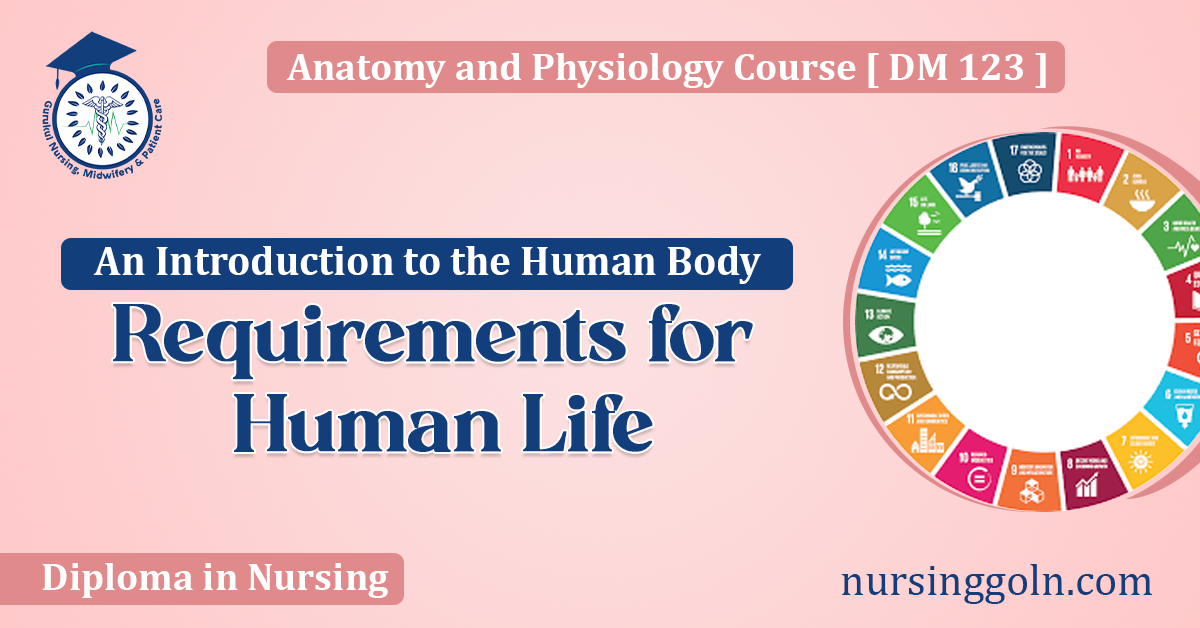The human body is an intricate and highly efficient system, seamlessly performing a multitude of functions every second. For these functions to be carried out efficiently, there are certain essential requirements. In this article, we will delve into the fundamental necessities that enable human life to flourish and provide an overview of the human body’s miraculous structure and functions.
Requirements for Human Life: An Introduction to the Human Body

Oxygen
All of our body’s cells require oxygen to function. This vital gas is inhaled from the atmosphere and then transported to cells throughout the body, where it’s utilized to produce energy. The respiratory system, consisting of the lungs, bronchi, trachea, and other components, plays a critical role in acquiring and distributing oxygen.
Every cell in the body, especially those in the brain, relies on oxygen to produce adenosine triphosphate (ATP), the molecule that provides energy to cellular processes. Without an adequate supply of oxygen, cells would not function correctly, leading to cell damage and, ultimately, death.
Nutrients
Nutrients are substances acquired from food and used by the body to produce energy, synthesize tissues, and regulate bodily functions. These nutrients include:
- Carbohydrates: The primary source of energy for the body. Glucose, a simple sugar, is used by cells to produce ATP.
- Proteins: Essential for tissue repair and the construction of new tissues. Proteins are also involved in various metabolic reactions.
- Fats: Serve as a secondary source of energy and are necessary for the production of certain hormones and cellular components.
- Vitamins and Minerals: These are required in small amounts but are crucial for various physiological functions.
Water
About 60% of the human body is made up of water. This clear liquid plays many roles:
- It’s a medium for most of the chemical reactions in the body.
- It aids in the transportation of substances.
- It helps regulate body temperature.
- It acts as a lubricant and cushion for joints and organs.
Narrow Range of Temperature
Humans are warm-blooded, which means our body temperature remains relatively constant, regardless of the external environment. The body works best at 37°C (98.6°F). Too high or too low temperatures can impair enzymatic reactions, leading to detrimental effects on bodily functions.
Atmospheric Pressure
Atmospheric pressure, essentially the weight of the air above us, affects many physiological processes. It’s crucial for breathing because the lungs use pressure differences to inhale and exhale air. The pressure also affects the function of cellular membranes and the diffusion of gases and liquids within the body.

Understanding the Human Body’s Structure
Now that we’ve covered the essentials for human life let’s explore the amazing structure of the human body.
1. The Skeletal System: Comprising 206 bones in adults, the skeletal system provides support, protection for internal organs, movement (in conjunction with muscles), mineral storage, and blood cell production.
2. The Muscular System: This system includes over 600 muscles that assist in movement, posture, and heat production.
3. The Nervous System: The brain, spinal cord, and a vast network of nerves make up this complex system. It controls and coordinates body functions, interprets external and internal stimuli, and enables consciousness, memory, and creativity.
4. The Circulatory System: This system, consisting of the heart, blood vessels, and blood, transports nutrients, oxygen, hormones, and waste products throughout the body.
5. The Respiratory System: Comprising the nose, trachea, bronchi, and lungs, it facilitates the exchange of gases – oxygen and carbon dioxide – between the body and the environment.
6. The Digestive System: From the mouth to the anus, this system breaks down food into absorbable nutrients and eliminates waste.
7. The Endocrine System: Made up of glands that secrete hormones, it regulates growth, metabolism, development, and homeostasis (maintaining the body’s internal environment).
8. The Urinary System: This system eliminates waste products and helps maintain fluid and electrolyte balance.
9. The Immune System: It defends the body against pathogens and potentially harmful substances, ensuring we remain healthy.
10. The Integumentary System: Comprising the skin, hair, and nails, it offers protection, regulates body temperature, and provides sensory information.
11. The Reproductive System: It’s responsible for producing offspring and passing genetic information to the next generation.

The human body is a masterpiece of evolutionary engineering. From the atomic interactions within our cells to the coordination of massive muscle groups, each component plays a vital role. While it’s essential to understand the requirements for human life and the structures that make up our bodies, it’s equally critical to recognize the body’s resilience and adaptability. Even when deprived of one or more essentials, our bodies can often adapt for a time, working to maintain the balance and perpetuate life.
Our understanding of these systems and processes has paved the way for advancements in medicine, biology, and many other fields. As we continue to delve into the intricacies of our bodies, we can appreciate the wonder and complexity of the human life form.
By valuing and caring for our bodies, ensuring they have the oxygen, nutrients, water, appropriate temperature, and atmospheric pressure they need, we can enjoy health, vitality, and the immense potential that life offers.
See more:
